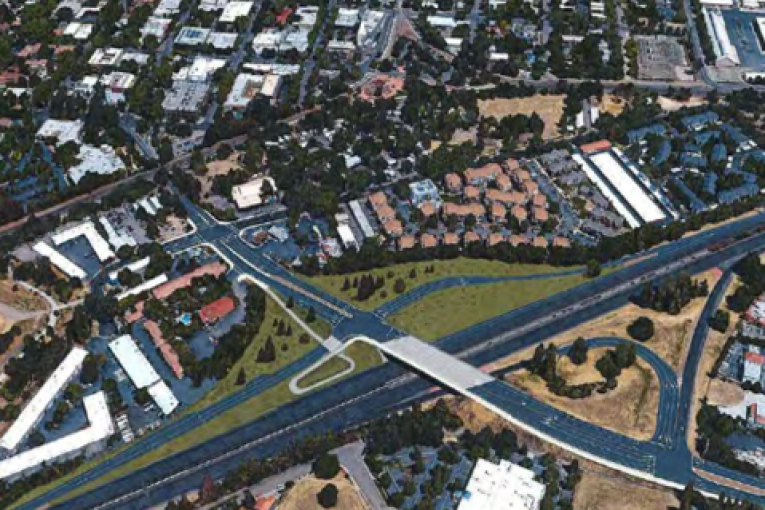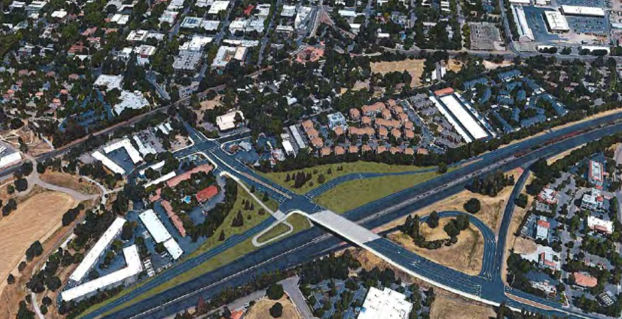

Last December the city announced it had been awarded $5 million to complete the I-80/Richards Blvd. Interchange Improvement Project. That was expected by the city and naturally good news, as it allowed the city to proceed with critical infrastructure upgrades along Richards Boulevard.
But while good news, at the same time City Manager Mike Webb told the Vanguard that the $5 million will pay for just under half of the construction of the interchange.
“The project construction cost is estimated at around $11M, and we have already expended some funds for design and environmental review,” Mr. Webb explained.
The expectation was that the remaining funds would come from local sources – roadway impact fees from recent development projects like Lincoln40, Nishi, the hotels and others, the former Redevelopment Agency bond proceeds, and $550,000 kicked in by UC Davis as part of the MOU.
Mr. Webb told the Vanguard in December, “We are exploring other sources as well. Final funding package decisions will be made by the City Council when we do the bid process. Of note, Roadway Impact fees cannot be used for maintenance but are used for upgrades and improvements such as this.”
Now, this week comes the announcement that the city is receiving an additional $2.7 million in grant money from SACOG (Sacramento Area Council of Governments). This means that the total grant funding for the project comes to $7.7 million which will free up some of the roadway impact fees for other uses.
Councilmember Lucas Frerichs is currently the Vice-Chair of SACOG and will soon be the President.
In a release from the city this week, he noted, “This new grant money, along with the initial grant, will advance critical transportation infrastructure improvements and sustainability goals while improving traffic flow on a newly-designed Richards Boulevard interchange. With the project now funded, final plans are nearing completion (in partnership with Caltrans) and will soon be ready to go out  to bid to secure a contractor and then begin construction.”
to bid to secure a contractor and then begin construction.”
This is big news for Davis because long before concerns about Mace Blvd. came into play, Richards Blvd. had a number of problematic features on it. The one that gets the most attention, of course, is the two-lane entrance to downtown via the Richards Tunnel.
The city has not attempted to directly attack the tunnel in over 20 years. In the late 1990s, the voters turned down a measure that would have widened Richards tunnel under the railroad tracks.
An important part of that problem is that it is not clear that widening the underpass would help reduce congestion. Traffic continues to back up even past the underpass. The traffic flow exceeds the capacity of the downtown surface streets to handle it – regardless of the underpass.
As the Vanguard has noted, part of the problem is that traffic from I-80, especially westbound I-80, is using Richards as the entry point to UC Davis, which causes traffic backups on Richards Blvd. in the morning and along 1st St and B St in the evening commute times.
When Nishi was proposed in 2016, with access to West Olive as well as a proposed R&D space, the developers were going to invest roughly $23 million in infrastructure improvements including creating a widened West Olive Drive with a new route onto campus to bypass the tunnel.
However, the voters rejected that version of Nishi and the new version stipulates no access to Olive Drive.
Such an access point would have allowed campus-bound traffic to bypass the underpass and go directly to campus. The voters were apparently – at least some of them – not sold on the improvement and narrowly rejected the proposal.
While the current proposed corridor project is much more modest without the tunnel bypass, it does seek to improve both safety and traffic flow.
The project will do four things, however.
First, it will add a grade-separated pathway under the westbound I-80 freeway on-ramp. This will help to improve bicyclist and pedestrian safety between Research Park Drive in South Davis to First Street in Downtown Davis.
Second, and this is hugely important – it will reconfigure Richards Blvd.’s westbound I-80 off-ramp from the current problematic cloverleaf to a tight diamond configuration that will create additional intersection spacing with Olive Drive.
This is critical because, right now, the westbound off-ramp is an open merge right onto Richards, dumping a flow of traffic that is uncontrolled right before the intersection. Not only does this create a backup both on the off-ramp and Richards, but it creates a dangerous mesh point between modes of transportation – bikes, pedestrians, buses, cars, and other vehicles.
Third, it will signalize this traffic. So instead of having to cooperate and merge onto Richards, there will be a traffic signal that should help improve the flow of traffic merging with those vehicles already on Richards Blvd. ahead of the intersection.
Finally, they will follow through on the long-promised action of closing the exit on Olive Drive, which will turn East Olive from an arterial road back into a residential street. The expectation is this will “prevent vehicles from using the exit as a thoroughfare to improve safety in the Olive Drive neighborhood.”
Once again, this round of funding does not include funding for the Olive to Depot bike and pedestrian crossing. As noted previously, that is part of a separate application through the Active Transportation Program, or State ATP Funds.
In my view, this project will improve but not fix Richards Blvd. From what we have observed over time and has been confirmed by city officials over the years, the biggest problem with Richards is the large volume of vehicles using Richards to exit the freeway and head to campus.
One reason we were disappointed in the defeat of Nishi in 2016 is that they were going to fund the $23 million to create a bypass from Richards Blvd. to campus. That now cannot occur.
In the long term, we believe that parochial concerns of residents have led to two unsupportable results that have cut off new neighborhoods from the rest of the city. West Village does not have access to Russell Blvd. due to objections from the neighbors around 15 years ago, and Nishi will not have access to Richards for similar reasons.
Neither of these decisions make a lot of sense from a connectivity or planning perspective, and we would hope that after these developments are fully built out, the city will revisit the issue of access and put the matters on the ballot to allow the community to fix these shortcomings.
—David M. Greenwald reporting


Which followed the first time such a measure went to the the voters… ~ 20 years earlier.
Two mainly false statements… addressing the second…
E Olive started out as part of THE main arterial road in Davis… US 40, aka Lincoln Highway… other parts were what are now known as Russell Blvd, B Street, First Street, and, of course, the OH.
The first is also historically untrue, but on CalTrans’ “wish list”, for decades…